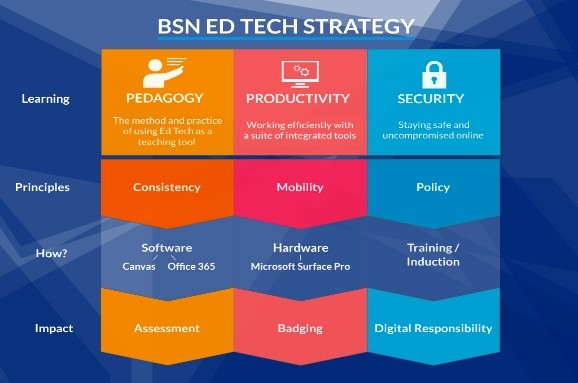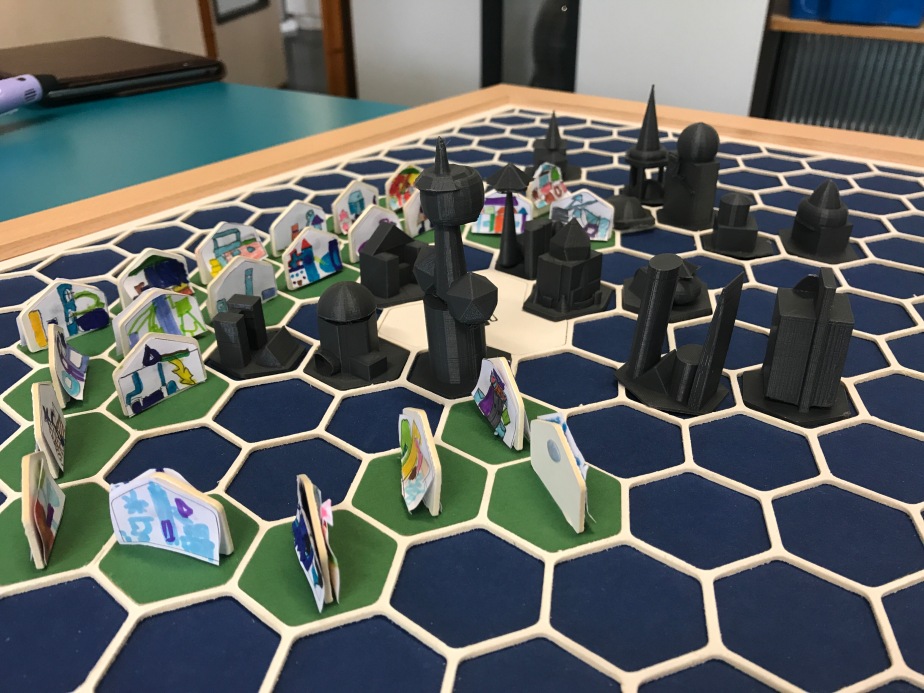The Royal Society has recently published a review of UK Computing Education as a milestone since the introduction of a new curriculum three years ago. the Society wanted to see how the new curriculum has impacted in schools from KS1 to KS5.
The change to the curriculum involves a shift from the previous strategy which focused a great deal on presenting information and data to a curriculum that brings the emphasis onto coding.
I was interested in this review because, as a leader of Technology use for more than 25 years, I’ve seen a number of shifts in emphasis and have been involved in using the new strategy since it began.
The report raises concerns that, while the shift is a good strategy, the investment and confidence in schools has not been adequate to ensure the new curriculum is working well yet.
It recognizes that to introduce a brand new curriculum in this way is significant but that if it is done with little mainstream support and infrastructure then it may leave teachers under prepared.
There are a number of voluntary organisations and tools that have been positive including CAS (Computing At School) and Barefoot Computing being two good examples but the support in school has varied.
As part of the report the teacher surveys did not give much reassurance about the way teachers are feeling.
Teacher confidence at different stages of the curriculum
32% of primary teachers feel more confident teaching the earlier stages of the curriculum than the latter.
44% of secondary teachers feel more
confident teaching the earlier stages of the curriculum than the latter.
Source: Pye Tait. 2017.
After the Reboot: The State
of Computing Education in
UK Schools and Colleges.
the survey covered around 600 primary school teachers. I was immediately drawn to this quote and curious about who was included in the survey. As a primary school teacher myself I am focused on computing. some primary schools have a specific computing lead but many rely on generalists to include computing in their many roles. The report states that:
Despite efforts to obtain an unbiased view, due to the self-selecting nature of a survey, a significant number of the responses were from teachers who hold a degree-level qualification in a STEM subject or ICT (62%). Respondents were also broken down into those that had undertaken computing-related CPD in 2015 – 2016 with Computing At School, which made up 17% of those respondents (see Box 7). Other data sources suggest that a lower proportion of computing teachers have a related qualification. We therefore caution the reader that our survey data is unavoidably vulnerable to selection bias, and may represent an overoptimistic view of the true situation.
Department for Education. 2017. School workforce in England: November 2016. See https://www.gov.uk/
government/statistics/school-workforce-in-england-november-2016 (accessed 22 September 2017).
So its not a great reflection of the primary teacher that has responsibility for this alongside all the other curriculum areas they teach. In that instance, this, more competent group only has a third who are confident with the early stages of the new curriculum.
The report indicates that
Teacher confidence
As part of the survey we asked teachers to rate their confidence at each stage of the curriculum on a 10-point scale, with 1 being the least confident and 10 being the most confident. 48% of the surveyed teachers gave a score below 7 and were asked to provide explanations for the low confidence scores.
A common response from these teachers was that they were lacking sufficient theoretical and technical knowledge of computing that included aspects of programming and coding.
When comparing confidence ratings at different stages of the curriculum, perhaps unsurprisingly it is evident that teachers are more confident with the earlier stages than
with the later stages where the subject can have a greater focus on computer science.
This was further demonstrated when we asked teachers for their confidence in delivering
specific aspects of computing education.
Many indicated that they were most confident with the elements of the curriculum that were inherited from the previous ICT courses, for
example using technology safely, responsibly and securely, and creating digital content for
a given audience.
Pye Tait. 2017. After the Reboot: The State of Computing Education in UK Schools and Colleges. pp34–35.
teachers feel more secure in areas that were part of the ICT syllabus and the new elements are more challenging. I know what that feels like. I also work with colleagues that echo that feeling. I am also conscious that teachers often have to work with what they already know. If our own education includes something then we have a point of reference. However computing education in my own experience and that of many colleagues of various ages is more frequently absent than present.
How can we raise those confidence scores above 7?
The report gives a number of recommendations that I will come to in a later post.
Gender
The other area that I was interested in was related to Gender. The news at the moment has many gender awareness topics from the ‘pink girls clothing debate’ to ‘pay-gaps’ and ‘harassment’. But the disparity in tech doesn’t get as much attention. Too few girls are taking Computing as a subject amidst declining overall totals.
As a primary specialist, I am convinced this could be tackled by nurturing gender neutral attitudes to tech skill as early as possible. A recent BBC TV series on gender behaviour (No more boys and girls) have indicated that the apparent tendency for boys to be better at football and construction is something related to exposure rather than competence. So if girls do these things they can easily become expert.
I know the same is true about technology. Yet at a recent parents evening where up to 100 parents could choose to come and see me, of the 16 appointments I had, only three were with parents of girls. A little over 10%.
Whilst generalising, male parents more commonly thrived in a tech conversation while, more commonly, female parents use caveat language like ‘I’m not really good at technology’. It was not a scientific study but it stood out to me.
I am also very aware that in our computing lessons there are strong male and female students in KS2. There is a good balance at the top. Te report indicates that this isn’t reflected in the GCSE sign up or selection choice. Even though technology and computing provision in my own school is good at primary level, older female students are not signing up in large numbers either.
I’ve signed up for a Future Learn course this week. It’s called teaching computing. The two teachers who we have seen in the course so far sharing their teaching are men. Yet in many primary schools male teachers are in the minority. The Post Grad I am doing now has 8 students but it’s 75% female. As you can see the messages about gender are very mixed indeed.




 Some of the actions we have taken to improve staff wellbeing this year include:
Some of the actions we have taken to improve staff wellbeing this year include:










